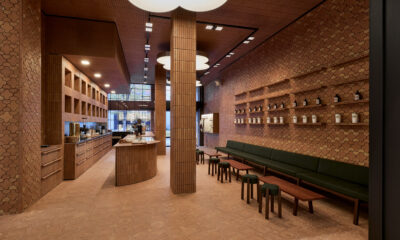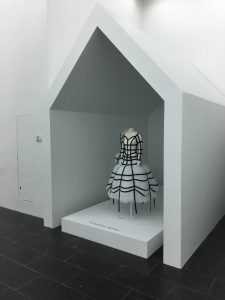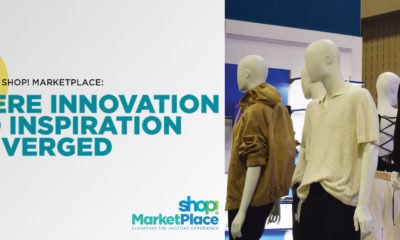Retail is the theater of all that is new and relevant in our daily lives. If one were to hold a mirror to the face of fashion, the reflected image would be us. And by fashion, I refer to apparel, the latest smartphones, the coolest speakers, and yes, even tires and refrigerators. There is fashion in everything, and retail captures and communicates the excitement and the nuances of what is in vogue.
Art is a reflection of who we are, so by deductive reasoning, fashion is an art form. The work of Elsa Schiaparelli in the 1920s and ’30s clearly elevated fashion into the realm of art. Over the past several years, The Metropolitan Museum of Art (New York) has served us well with its continued “fashion as art” exhibitions.
From the “Alexander McQueen: Savage Beauty Exhibition in 2010” to “China Through the Looking Glass” in 2015, The Met has continued to blur the lines between fashion and art. This year, it brought us “Rei Kawakubo / Comme des Garçons: Art of the In-Between,” organized by Andrew Bolton, the curator of the Costume Institute at the Met.
Considered one of the most important fashion designers of the past 40 years, Kawakubo has challenged the boundaries between art and fashion. The exhibition is a study in polarity as she explores the relationships and the “in-between” realities of absence and presence; fashion and anti-fashion; high and low; then and now; and clothes and “not clothes.” The exhibition is a view of the space between these dualities that serves as the canvas for her creations.
Commenting on the show, the designer said, “If you can explain it, you're done. Rather, it’s all open to interpretation.” When asked by a critic, “What does it mean?” she simply drew a circle on piece of paper and gave it to her.
Of particular note to store designers and visual merchandisers is the architecture that defined the setting, or set the stage, for Kawakubo’s work. On the exhibition environment, Kawakubo said, “When working on the design concept with the museum, my aim was to create a space that was new, that hadn't been seen before. My aim was to create a space that people would find energizing and stimulating, and even more important, inspiring and uplifting.”
Advertisement
The spirit of the space, or the void of the in-between, is celebrated by the design of the exhibition hall itself. The collaboration between Kawakubo and The Met emphasizes the circle, a Zen Buddhism symbol of the void, while a sense of space is referenced through the interplay of structural forms and mass. The stark whiteness of the shapes and forms of the gallery’s architecture further emphasizes the duality of absence and presence.
Though there are lessons to be learned from Kawakubo’s esoteric aesthetic, perhaps it’s the exploration of the less obvious, and in fact the space in-between, that will open new vistas and possibilities to those who envision retail’s ever-evolving innovations.
Retail designers might concur with Kawakubo’s philosophy, “My clothes and the spaces they inhabit are inseparable – they are one and the same vision, the same sense of values.”
 |
Don't miss Eric's session at VMSD's International Retail Design Conference (IRDC), Sept. 5-8, in New Orleans. His presentation, “The Best of Brick and Mortar: Design and Desire,” taking place Wednesday, Sept. 6, at 11:15 a.m., will examine design as a profit center. For more information about his session and others, visit irdconline.com.
|
Eric Feigenbaum is a recognized leader in the visual merchandising and store design industries with both domestic and international design experience. He served as corporate director of visual merchandising for Stern’s Department Store, a division of Federated Department Stores, from 1986 to 1995. After Stern’s, he assumed the position of director of visual merchandising for WalkerGroup/CNI, an architectural design firm in New York City. Feigenbaum was also an adjunct professor of Store Design at the Fashion Institute of Technology and formerly served as the chair of the Visual Merchandising Department at LIM College (New York) from 2000 to 2015. In addition to being the Editorial Advisor/New York Editor of VMSD magazine, Eric is also a founding member of PAVE (A Partnership for Planning and Visual Education). Currently, he is also president and director of creative services for his own retail design company, Embrace Design.


 Headlines1 week ago
Headlines1 week ago
 John Ryan2 weeks ago
John Ryan2 weeks ago
 Headlines7 days ago
Headlines7 days ago
 Headlines2 weeks ago
Headlines2 weeks ago
 Headlines1 week ago
Headlines1 week ago
 Retail Buzz3 days ago
Retail Buzz3 days ago
 Headlines1 week ago
Headlines1 week ago
 Headlines1 week ago
Headlines1 week ago





























